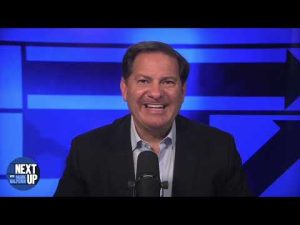In the heart of Washington, a legal drama is unfolding that feels more like a game of chess than a straightforward judicial process. President Trump, having barely settled into his second term, has already found himself in hot water with the courts—more than once. In just two months, he has faced more federal court injunctions than Joe Biden did in four years, or even Barack Obama in his eight years in office. The swift strokes of legal gavel slams are causing quite the stir, and Trump’s supporters are voicing their concerns about the implications for executive power and governance.
Just recently, a federal judge decided to block Trump’s executive order that aimed to ban transgender individuals from serving in the military. This was just one of the recent roadblocks he has encountered. Another judge stepped in to halt Trump’s plans to cut funding from the United States Agency for International Development (USAID), asserting that this act was unconstitutional. Then there’s U.S. District Judge James Boasberg, who is attempting to prevent the administration from deporting members of the Venezuelan gang Tren de Aragua, saying they must be returned. This does not sit well with many who believe that security and law enforcement should trump judicial interference.
In a rather colorful moment in the Oval Office, Trump remarked on the nature of these gang members, noting that they appeared frail when being apprehended, quite unlike the image of toughness they projected while committed to their criminal endeavors. He insists that they are “bad people” that the nation cannot afford to welcome back. The president expressed frustration over judicial decisions made by individuals who did not hold the mandate of the American people, hinting that his election was partly focused on enforcing stricter immigration policies.
The chatter in political circles suggests that there’s an ongoing conflict between the executive branch and the judiciary, a sentiment echoed by various commentators. They argue that an excessive number of lawsuits—over 120, in fact—have been thrown at Trump, primarily from a coalition of left-wing activists bent on countering the president’s agenda. The tidal wave of judicial challenges is concerning for those who believe in the sanctity of the voting process and the authority of elected officials to carry out their duties.
Senator Josh Hawley from Missouri has been vocal about rolling back the power of nationwide injunctions that individual judges seem to wield. He is advocating for Congress to take action and establish clearer boundaries regarding judicial reach. The legal tug-of-war begs a significant question: if a judge can halt the decisions made by the elected executive branch, what does that mean for the electoral process? This idea leaves many scratching their heads, as it raises eyebrows about accountability and balance in governance.
Interestingly, it’s not just about Trump’s executive orders; the sheer volume of legal battles highlights a larger issue—the interaction and intersection of branches of government. The discussion has sparked ideas among lawmakers, suggesting that creative legislative tactics could help empower the executive branch. Some are even proposing that critical policies be tied to budget reconciliations in order to ensure that the executive can navigate around these judicial hiccups. The stakes couldn’t be higher, and for many, the perceived overreach of judicial authority threatens the very fabric of democracy itself. As the battle rages on, one thing is clear: the tension between branches of government is far from over, and it continues to evolve with each court ruling and executive decision.







